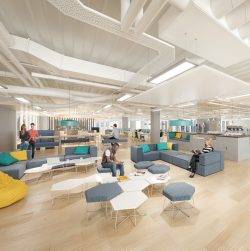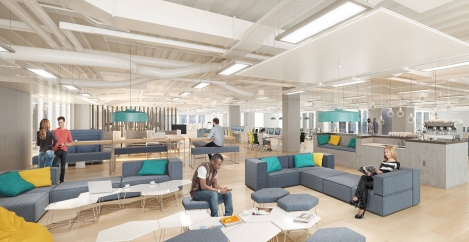April 4, 2019
People, not cost now most important factor behind corporate real estate decisions
 The corporate appetite for flexible space continues to grow as around two-thirds of occupiers rank employee engagement (68 percent) and talent attraction & development (65 percent) as two of the three most important drivers of corporate real estate (CRE) strategy. According to the 2019 EMEA Occupier Survey by CBRE over a third of companies see labour and skills shortages as a key strategic challenge, double last year’s result. In line with last year’s survey, technology disruption (36 percent) economic uncertainty (43 percent) and cost escalation (31 percent) all feature highly as key challenges for occupiers.
The corporate appetite for flexible space continues to grow as around two-thirds of occupiers rank employee engagement (68 percent) and talent attraction & development (65 percent) as two of the three most important drivers of corporate real estate (CRE) strategy. According to the 2019 EMEA Occupier Survey by CBRE over a third of companies see labour and skills shortages as a key strategic challenge, double last year’s result. In line with last year’s survey, technology disruption (36 percent) economic uncertainty (43 percent) and cost escalation (31 percent) all feature highly as key challenges for occupiers.
In last year’s survey cost-reduction was the single most important driver of CRE strategy and employee engagement was fourth but this year, cost reduction has dropped to fourth, employee engagement is second and talent attraction & development is third. In this context, optimising human capital is becoming the overriding aim of occupiers’ property decisions.
The survey identifies four major levers through which companies are seeking to use real estate as a way of influencing and enhancing their appeal to skilled labour, these include:
Procurement and fit-out strategy: While traditional procurement and fit-out approaches are still favoured when taking large leases in a new building, the survey found that occupiers are increasingly influenced by internal building characteristics. Nearly 60 percent of occupiers would be willing to pay a premium of at least 10 percent over typical prime rents for a curated high amenity offer under a service agreement, compared with 46 percent who would pay a similar premium for a fully-tech enabled smart building.
Flexible space strategy: Corporate appetite for flexible space continues to grow, with the proportion of companies expecting to make significant use of flexible space over the next three years twenty percent higher than those who currently do so. The use of flexible space as a means of attracting and retaining talent is up ten percent from last year. While a rising number of companies are also using flexible space as part of a wider attempt to experiment with different workplace and occupancy models.
User Experience strategy: Formal User Experience (UX) programmes aimed at curating the full range of workforce needs across workplace, amenity and service are still not being widely used. Only around a third of companies have a formal UX programme, or plan to introduce one. However, a third of companies have plans to hire a UX lead and two-thirds would be willing to pay a premium for a building in which the landlord had provided an enhanced UX offer.
Technology strategy: Technology disruption, particularly AI and machine learning is becoming a key driver of technology strategy. 70 percent of companies intend to raise their level of real estate technology investment in the next few years towards a more people-focussed direction. The methods of acquiring the skills needed to deliver these aims, such as data scientists, are becoming more sophisticated with corporates pursuing a variety of approaches, including outsourcing to specialists.
Ian Entwisle, Chief Executive Officer, Global Workplace Solutions APAC/EMEA commented: “There are clear links between all these different areas of strategy. The challenge for companies is to establish an effective approach to each element as well as identifying the synergies available from combining elements of all four. There may be an experimental element to this process since the best solutions are not always obvious, but in general every effort is being made to invest in the best possible environments to make the existing workforce both more efficient and, where possible, more productive.”














